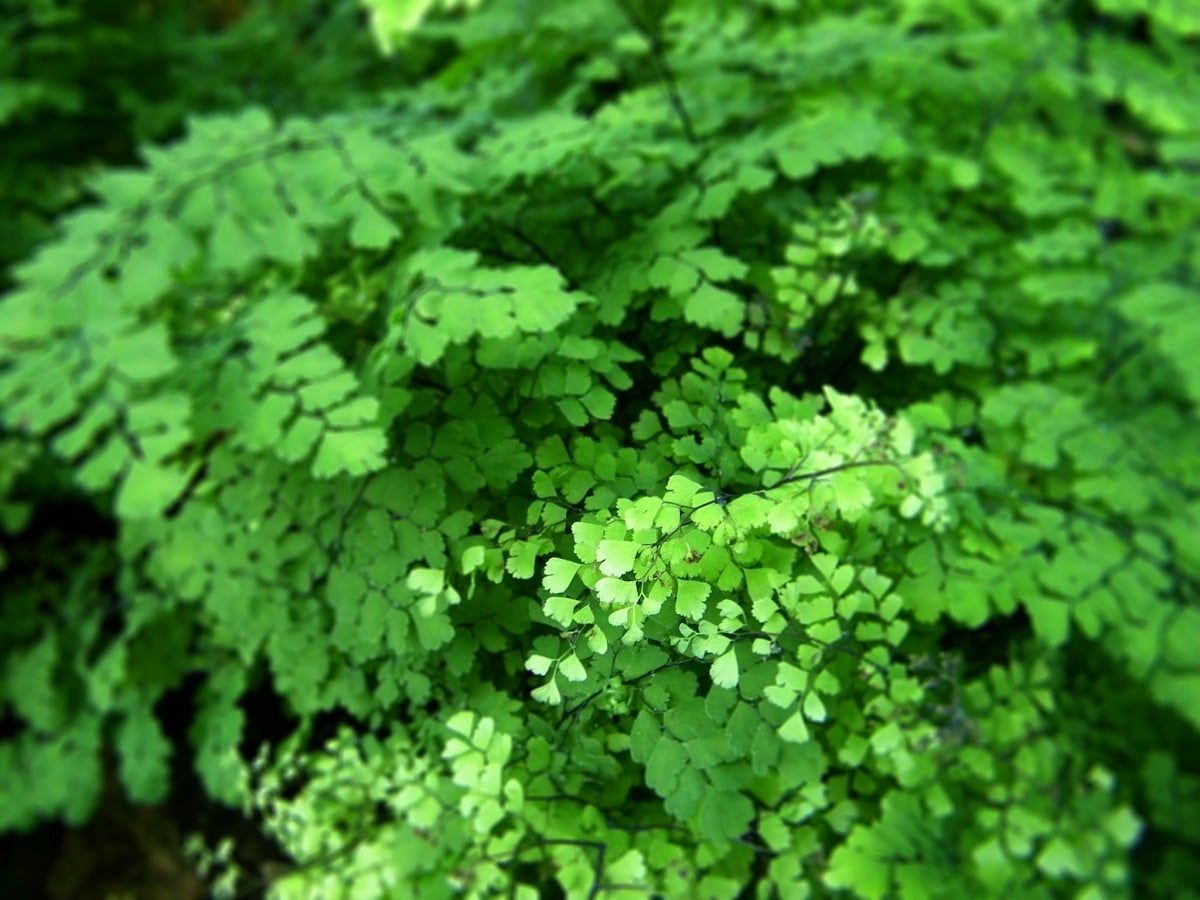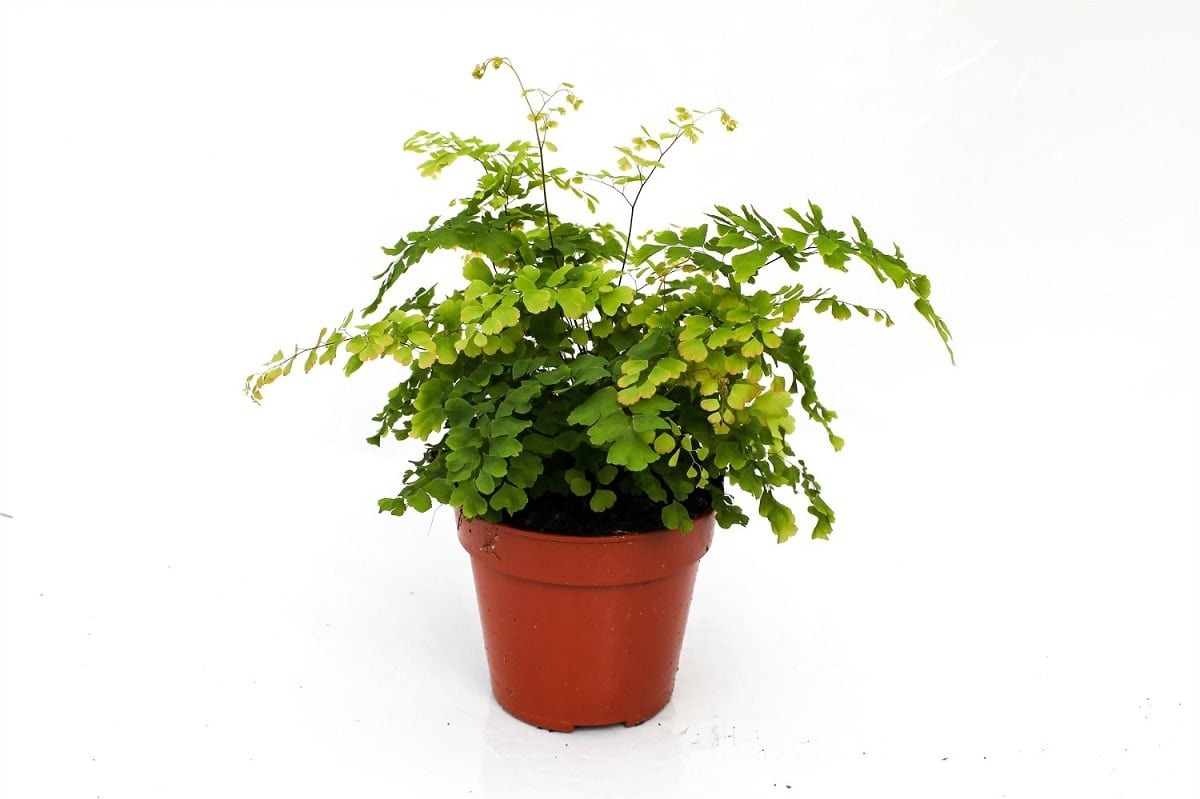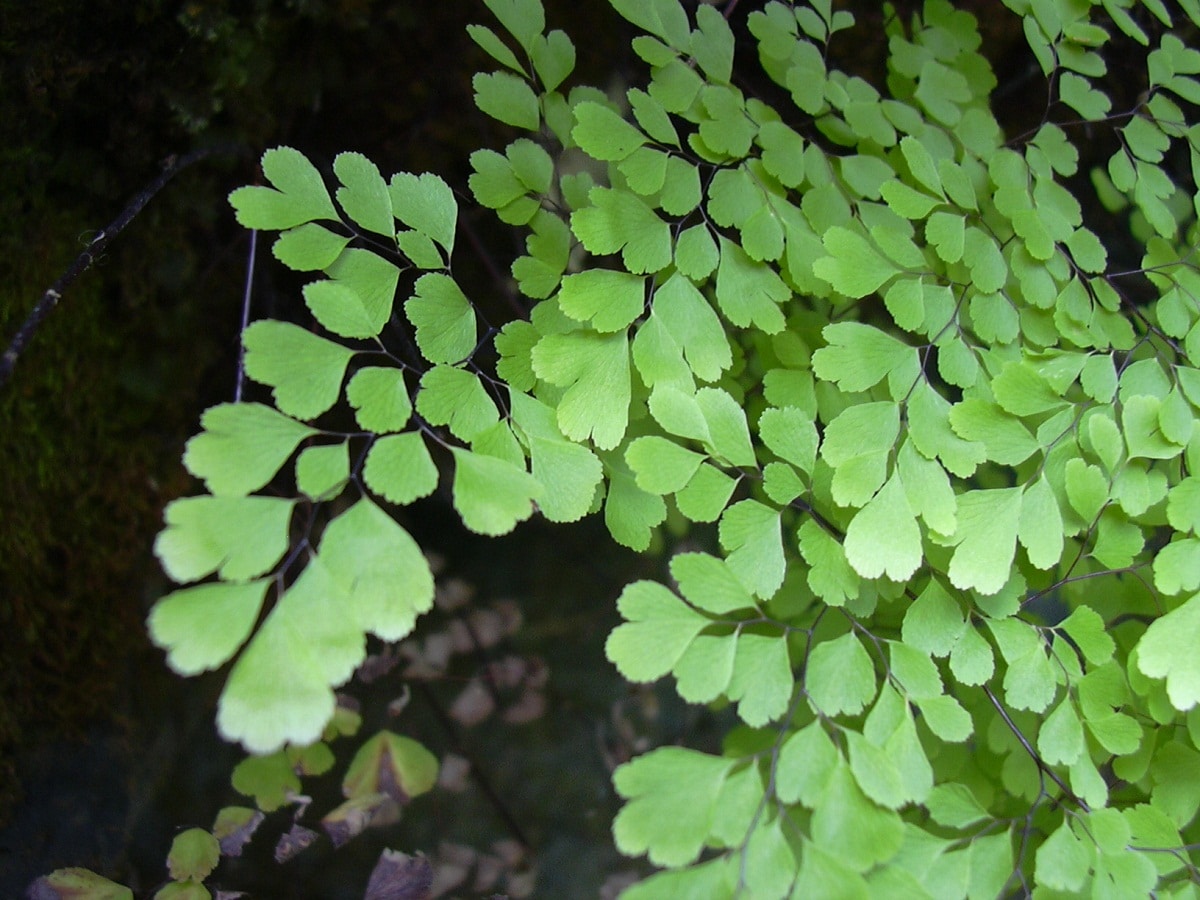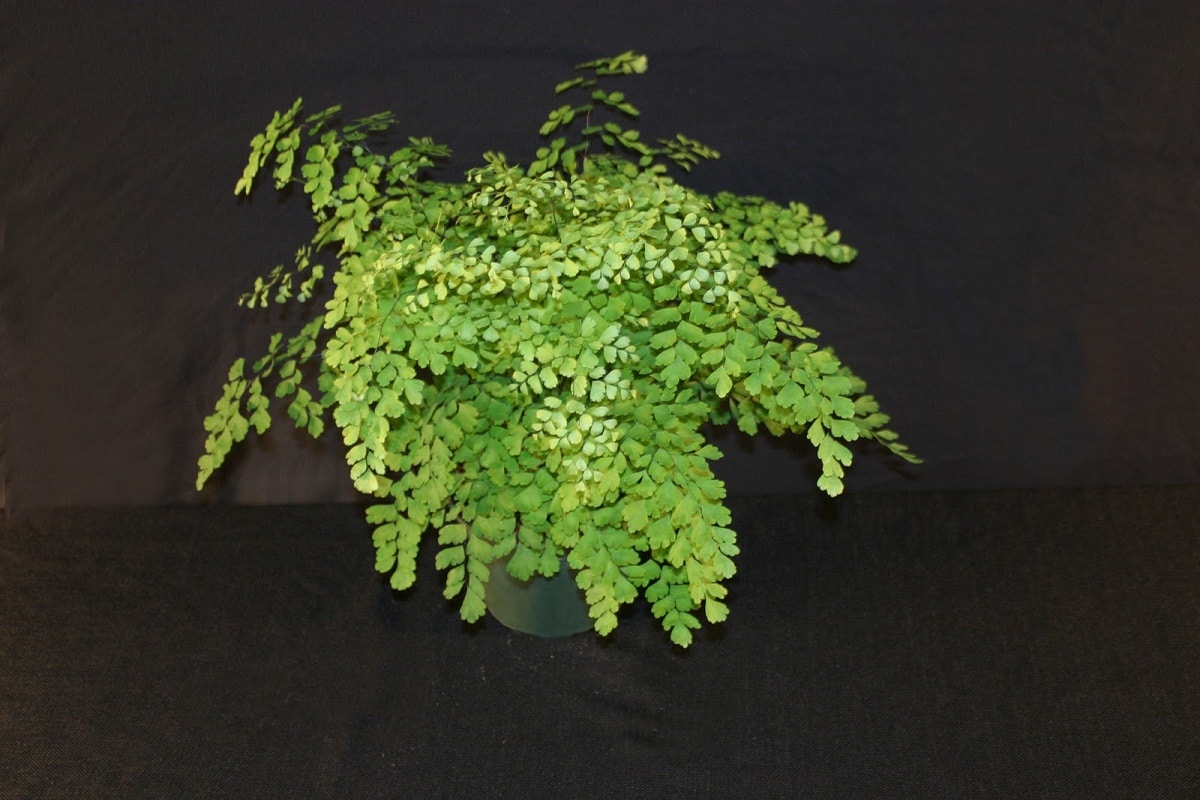
El adiantum raddianum It is one of the most popular and used plants around the world, although its origin is in tropical America. Learn more about this species of fern that is also called Venus Hair or Maiden Hair.
In this species they are all perennial herbs that present a creeping and elongated underground stem. On the underside of their pinnae, they present sori, which will be in charge of participating in the plant's reproduction process.
Features adiantum raddianum

El Adiantum Radidianum It is not the only one of its kind, there are many more within this world of plants, to which also called maidenhair and they are all part of the family of the ferns, which are characterized by being low plants that generate leaves from their bases, that is, very close to the ground.
Venus hair usually reaches between 15 and 50 centimeters in height and in its composition it presents a foliage that shows a certain delicacy, with branches that become finer and finer as they spread, until they reach the width of a hair.
The edges of this foliage have a particular softness and a triangle fan shape that gives the leaves such a beautiful and ornamental appearance, that show a green color from clear, when they are young, to more intense, when they reach their adult stage.
In its nature, maiden hair is a persistent to semi-persistent plant, and this is according to the weather conditions that occur in the environment where it is.
Farming
In the event that this is not cultivated to be ornamental for interiors, Venus hair is a plant that tends to proliferate in environments where humidity and warm to tropical temperatures predominate.
In places that present these environmental characteristics, we can find it as predominant, for example, close to rocks where the shadow is more present than the sun, surely close to a water mirror, waterfalls or rivers, since within the fern family, this is one of the plants that requires the highest humidity for its proliferation.
The damp walls, which usually make up caves and wells, are also the place for their growth without cultivation. That is, any type of environment where humidity is predominant and temperatures do not become too low, the adiantum raddianum will have the opportunity to grow, develop and show its green coloring of the leaves and their delicate stems, moving with the wind to result in a special ornamental beauty in open environments.
How do they reproduce?
Like all ferns, the adiantum raddianum is sporophyte in nature, that is to say, that it produces a type of spores that will be the ones that will lead the plant to its reproduction. These spores mature within a coating called sporangia, which are the ones that culminate in clustering to reach the aforementioned sori.
By action of the wind, these spores are spread in different places and the germination process will take place in an independent plant, which at that time is called the prothalo, which involves both male and female sexual organs. The water will be in charge of transporting them for their fertilization.
Temperature

As mentioned above, humid climates are the preference of this particular type of fern and among that humidity, high temperatures are also its greatest development environment.
El adiantum raddianum It comes from the tropical areas of Central America, so the temperatures that best suit you are above 16 ° C, with a high humidity index.
That is why for its correct development it is not convenient to keep it in dry places. In the case of having it indoors, it is convenient that this is not near the heating or air-conditioned environments of all kinds, which dry out the area and alter the structure of the Hair of Venus.
If you have no choice but to place it in a place where there is heating, you can place it in a container that constantly holds water, so that it never loses the natural moisture it needs to develop.
To grow the hair of Venus, you need a substrate that has the necessary nutrients and as we have already been telling you, a favorable humidity for its land. While they must have moist soil in which to thrive, they will not grow well in a puddle either, so keeping the soil moist without generating large concentrations of water will be the challenge.
A temperature of between 20 and 28 degrees will be special for its proper development, with large temperature variations being very harmful to its fragile structure. That he adiantum raddianum It cannot be grown in direct sunlight, it does not mean that it needs complete darkness.
The best places to grow it are those where there is light, but not directly from the sun's rays, which would deteriorate its leaves and structure. The best time to plant is autumn or spring, but it will be in this last period the time to carry out a transplant and a reproduction, reaching a multiplication of the same by dividing the bushes.
Irrigation

As we knew how to say in each of the points, constant humidity is one of the main axes for this plant to develop in the best way, so constant watering, to have a good amount of water on its land, added to the water spray on its leaves, which are very receptive and can absorb a large amount of water, is the key to keeping them in shape.
A very effective way to carry out the watering of this plant so that it never loses hydration, is place the pot on a pebble surface in large quantity, to fill these with water. That will keep the water between the pebbles and provide the environment they need to always be in contact with moisture.
Care
One of the maximum cares, being such a moisture-friendly plant, is to keep it away from heated or too dry environments. This will bring you irreversible damage. The compost will be welcomed by the plant during the months from the beginning of March to the beginning of September in the northern hemisphere, at which time they may lose a certain shape.